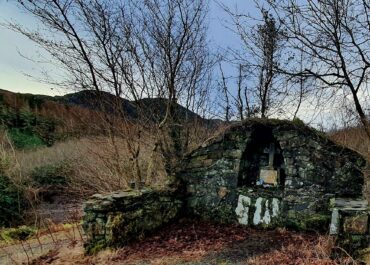Ritual site - holy well, Drumaville, Culdaff, Co. Donegal
On the muddy foreshore of Drumaville townland in County Donegal, three freshwater springs bubble up through circles of carefully placed stones.
Ritual site - holy well, Drumaville, Culdaff, Co. Donegal
Known locally as Cathal Dubh’s three boiling wells, these natural springs sit on the Black Rock, just off the road between Carndonagh and Malin. When the tide rolls in, the Atlantic briefly claims them, but at low tide they reveal themselves once more; small, persistent reminders of the area’s sacred past.
The springs take their name from Cathal Dubh, a hermit who once made his home in these parts. According to the folklorist Ó Muirgheasa, writing in 1936, pilgrims would make a turus, a ritual journey, to these wells, likely seeking healing or spiritual solace. The hermit’s cell, now just a ruin, can still be found at Goorey, roughly two miles from Malin along the road to Lagg. These stone circles marking the springs may seem modest, but they represent centuries of local devotion and the enduring belief in the sanctity of natural water sources.
Holy wells like these are scattered throughout Ireland, each with its own stories and rituals. The three wells at Drumaville offer a particularly evocative example; their position on the tidal foreshore means they exist in a liminal space between land and sea, appearing and disappearing with the rhythm of the tides. Though the regular pilgrimages have long since ceased, the springs continue to bubble up through the mud, their stone boundaries still intact, preserving a small but significant piece of Donegal’s spiritual heritage.


